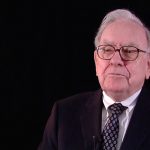It’s the answer to the question nobody asked – what can Father Christmas teach us about leadership?
After all, in his role as CEO of the North Pole, Santa has consistently met his KPIs and never failed to deliver when the pressure is on.
In many ways, Santa personifies the perfect leader: he is calm under pressure, strategic and has successfully led the world’s largest (and oldest) business through multiple recessions, Brexit and the rise of online shopping.
So, what can leaders learn from the white-bearded wonder? Peter Martin, Managing Director at shopper marketing specialist smp, tells us more.
Having a long-term vision
To deliver presents to millions of children around the world, Santa needs to organise and motivate his elves to make toys, year in year out. They sweat it out at the factory – one manufactures toys, another wraps and finally, someone finds the shipping address. It’s a well-oiled machine and churns out billions of gifts each year.
Father Christmas knows that to keep his giant factory working, he needs to inspire his elves, set each individual up for success and be a symbol for all the Santa-wannabes in shopping centres around the world. And like him, leaders need to give employees a clear understanding of what needs to be delivered and create a business plan based on a long term or ‘infinite’ vision. They must embrace new technologies and create a slick modern working environment where each employee feels valued and is encouraged to constantly learn.
Business leaders often find themselves focused on short-term goals that distract them from creating a longer-term strategy. However, having a future-gazing strategy gives employees a clear understanding of the direction in which the business is heading. This in turn makes employees feel like they are a part of the business’s journey and can contribute to it.
A study found that 30% business leaders lack confidence in building brands, in spite of their role relying on setting objectives across both the short- and long-term. 73% of business leaders understood that having both a short and long-term goal will deliver a stronger commercial performance.
Investing in talent
Rudolph used to be the company outcast, but Santa saw that his ‘weakness’ could be turned into a strength one foggy Christmas Eve. Since then, Rudolph has become a key member of the North Pole team and his exploits are enshrined in song and film.
While I’m not suggesting you create a catchy jingle every time a team member exceeds expectation, it is important to build a company culture where each individual’s skills are maximised.
Remember great leaders are great leaders because they constantly search for ways to make their best people better – 63% of UK employees value kindness as a leadership trait. For these individuals ‘continuous improvement’ isn’t a buzzword, but the basis of a successful business and culture based on investing in the talent they already possess.
[ymal]
The value of feedback and rewards
We all know Santa makes a list of children who have been naughty and nice. But this method is not only meant to reward, but also to signal areas where children have done well or could improve for the year ahead.
Leaders need to take this on board and understand that creating a feedback loop with your staff is one of the biggest components of a thriving company culture.
After all, providing employees with regular feedback is essential to professional growth. As such, consistent communication between employees and managers is connected to higher engagement.
This is particularly true for Gen-Z – this group craves feedback and 60% say they want multiple check-ins with managers each week. No-one wants to be bored or not understand what they are doing well or where they need to improve.
If you understand this and value each employee as being greater than the sum of their job title, there’s a much better chance you’ll be able to engage and inspire the next generation of workers.
Overall, when it comes to leadership in the business, Santa proves that it is all about inspiring and motivating people to succeed. Every year he creates and executes an effective strategy that his elves then put into place.
And although it may not appear obvious, there are clear parallels between Santa’s style of leadership and business success. Leaders must have an infinite vision, be inspirational and create a work culture where every employee is inspired. Those who do will go on the nice list, while those who don’t…well, you know how the rhyme goes.










